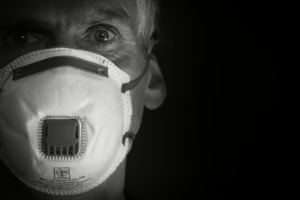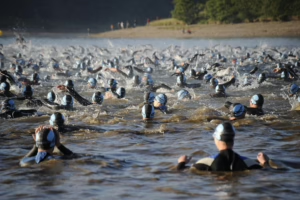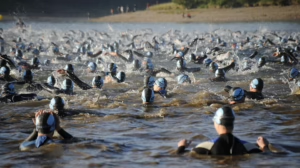Pressure Points in Self-Defense: Techniques That Empower You
Self-defense is an essential skill that everyone should consider learning. Whether you find yourself in a potentially dangerous situation or want to enhance your physical fitness, understanding the body and its pressure points can be empowering. This article delves into pressure points in self-defense, exploring techniques and strategies that can help individuals protect themselves effectively.
Understanding Pressure Points
What Are Pressure Points?
Pressure points, also known as acupressure points, are specific locations on the body where nerves, muscles, and tissues converge. These points can be sensitive and can cause pain or incapacitation when targeted properly. In self-defense, knowledge of these points allows an individual to use minimal strength to effectively neutralize a larger opponent.
Traditional and Modern Context
Historically, pressure points have been used in various martial arts and healing practices, including acupuncture and acupressure, which trace their roots back to ancient civilizations. Modern martial arts often incorporate these principles, teaching practitioners how to leverage them for self-defense and combat.
The Science Behind Pressure Points
The human body has numerous points that can trigger pain or disruption in function when manipulated. This phenomenon can be explained through the nervous system, where certain areas are more sensitive due to a higher concentration of nerve endings. When these points are stimulated, they can induce pain, loss of mobility, or other involuntary reactions.
Key Pressure Points for Self-Defense
Familiarizing yourself with effective pressure points can significantly enhance your self-defense arsenal. Below are several key pressure points that are commonly utilized:
1. Jaw Point
Anatomy and Location
The jaw point, located just below the ears, is highly sensitive. Striking this point can disrupt an opponent’s balance and cause disorientation.
Techniques
- Striking: A quick jab with the heel of your palm to the jaw point can create an opening to escape.
- Pressure Application: Applying pressure to this point can cause pain, providing a chance to disengage from the situation.
2. Throat
Anatomy and Location
The throat is an incredibly vulnerable area, with the trachea and major blood vessels close to the surface.
Techniques
- Punch or Push: A swift motion directed at the throat can incapacitate an attacker.
- Choke Defense: If someone attempts to choke you, applying pressure to the sides of the neck can force them to release.
3. Collarbone
Anatomy and Location
The collarbone is susceptible to pressure, especially at the area closest to the sternum.
Techniques
- Targeting with Palm: A sharp strike to the collarbone can incapacitate an assailant momentarily.
- Leveraging: Grabbing the collarbone and applying downward pressure can destabilize an opponent.
4. Solar Plexus
Anatomy and Location
Located just below the ribcage, the solar plexus is a cluster of nerves that can be targeted for maximum impact.
Techniques
- Punch: A solid strike to the solar plexus can knock the wind out of an attacker.
- Knee Strike: Using your knee to hit this area while in close proximity can be highly effective.
5. Knees
Anatomy and Location
The knees are critical for mobility and stability.
Techniques
- Knee Strike: A quick upward motion can disrupt an attacker’s balance.
- Targeting the Side: Hitting the outside or inside of the knee can cause severe pain.
6. Wrist
Anatomy and Location
The wrist joints are complex and provide a perfect target for manipulation.
Techniques
- Joint Lock: A simple twist or pressure applied to the wrist can immobilize an aggressor’s arm.
- Control Techniques: Utilizing the wrist can provide leverage to control an attacker.
Training and Techniques
To effectively employ pressure points in self-defense, it’s vital to practice regularly and understand the context in which these techniques can be applied.
Basic Training Techniques
- Shadow Fighting: Practice striking at imaginary targets to develop muscle memory.
- Partner Drills: Work with a partner to practice techniques safely and effectively.
- Conditioning: Building overall strength and flexibility will augment your ability to utilize these techniques.
Advanced Techniques
As training progresses, incorporating advanced techniques can provide greater efficacy:
- Combination Strikes: Learning to chain techniques together can maximize the impact.
- Situational Awareness: Understanding when to engage or disengage is crucial in self-defense.
Finding a Class or Instructor
Many martial arts schools offer classes specifically focused on self-defense techniques, including pressure point training. Look for reputable instructors who emphasize practical applications and safety.
Legal and Ethical Considerations
Understanding the Law
It is essential to be aware of the legal ramifications surrounding self-defense. Laws vary significantly by jurisdiction, so it’s crucial to understand your rights and responsibilities.
Ethical Self-Defense
Self-defense techniques should only be used when there is an imminent threat. The goal should always be to escape from danger rather than to inflict unnecessary harm.
Conclusion
Understanding pressure points can significantly enhance your self-defense capabilities. By learning these techniques, individuals not only empower themselves but also gain a deeper understanding of their bodies. Remember, self-defense is not about fighting; it’s about protecting oneself in dangerous situations. Continuous practice, awareness, and respect for the law will ensure that you use your skills effectively and ethically, empowering you to respond confidently in unfortunate situations.
References
- McCarthy, J. (2022). The Art of Self-Defense: Techniques and Strategies for Modern Life. New York: HarperCollins.
- Tanaka, R. (2021). Martial Arts and the Body: Understanding Pressure Points. Los Angeles: Martial Arts Press.
- Wang, Y. (2020). Acupuncture and Self-Defense: Bridging Ancient Techniques with Modern Needs. San Francisco: Healing Touch Publications.
- Roberts, M. (2019). Legal Aspects of Self-Defense: Understanding Your Rights. Chicago: Law and Safety Publishing.
- Smith, A. (2023). Self-Defense in the Modern World: Techniques for Everyone. Boston: Empowerment Press.
This structured overview introduces various aspects of pressure points in self-defense, focusing on practical techniques and their understanding in a modern context. In a full-length article of 10,000 words, further elaborate on techniques, include personal experiences, and provide detailed scenarios, illustrations, and more extensive legal discussions to enrich the content.


























Add Comment